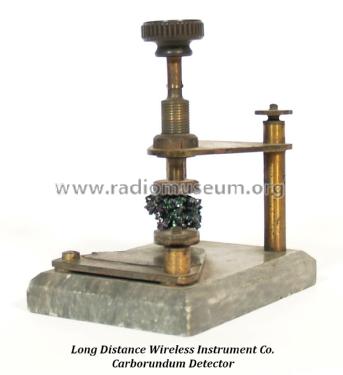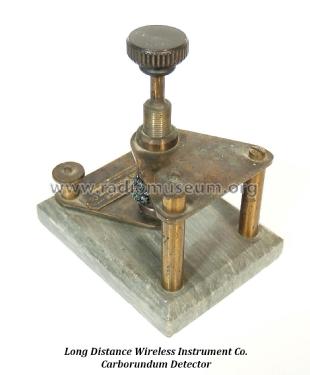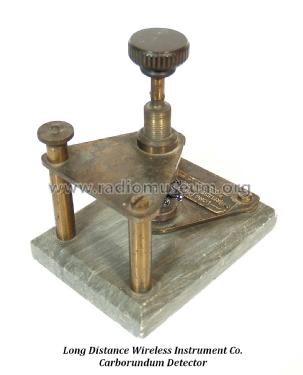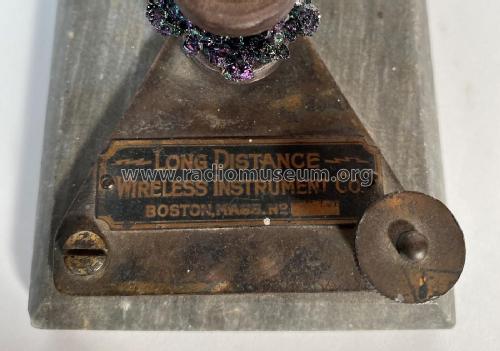Carborundum Crystal Detector
Long Distance Wireless Instrument Company; Boston, MA
- Land
- USA
- Hersteller / Marke
- Long Distance Wireless Instrument Company; Boston, MA
- Jahr
- 1909 ?
- Kategorie
- Radio-Bauteil (Einzelteil, keine Baugruppe)
- Radiomuseum.org ID
- 329034
- Hauptprinzip
- Detektion ohne aktive Elemente, solid state
- Wellenbereiche
- - ohne
- Betriebsart / Volt
- Keine Stromversorgung
- Lautsprecher
- - - Kein Ausgang für Schallwiedergabe.
- Material
- Diverses Material
- von Radiomuseum.org
- Modell: Carborundum Crystal Detector - Long Distance Wireless
- Form
- Tischmodell, Zusatz nicht bekannt - allgemein.
- Bemerkung
-
Marble based carborundum crystal detector by the Long Distance Wireless Instument Company.
Invented in 1906 by Henry H. C. Dunwoody, this consisted of a piece of silicon carbide (SiC, then known by the trade name carborundum), either clamped between two flat metal contacts, or mounted in fusible alloy in a metal cup with a contact consisting of a hardened steel point pressed firmly against it with a spring. Carborundum, an artificial product of electric furnaces produced in 1893, required a heavier pressure than the cat whisker contact.The carborundum detector was popular[ because its sturdy contact did not require readjustment each time it. was used, like the delicate cat whisker devices.
- Autor
- Modellseite von Alan Larsen angelegt. Siehe bei "Änderungsvorschlag" für weitere Mitarbeit.
- Weitere Modelle
-
Hier finden Sie 6 Modelle, davon 4 mit Bildern und 0 mit Schaltbildern.
Alle gelisteten Radios usw. von Long Distance Wireless Instrument Company; Boston, MA








